Full text
PDF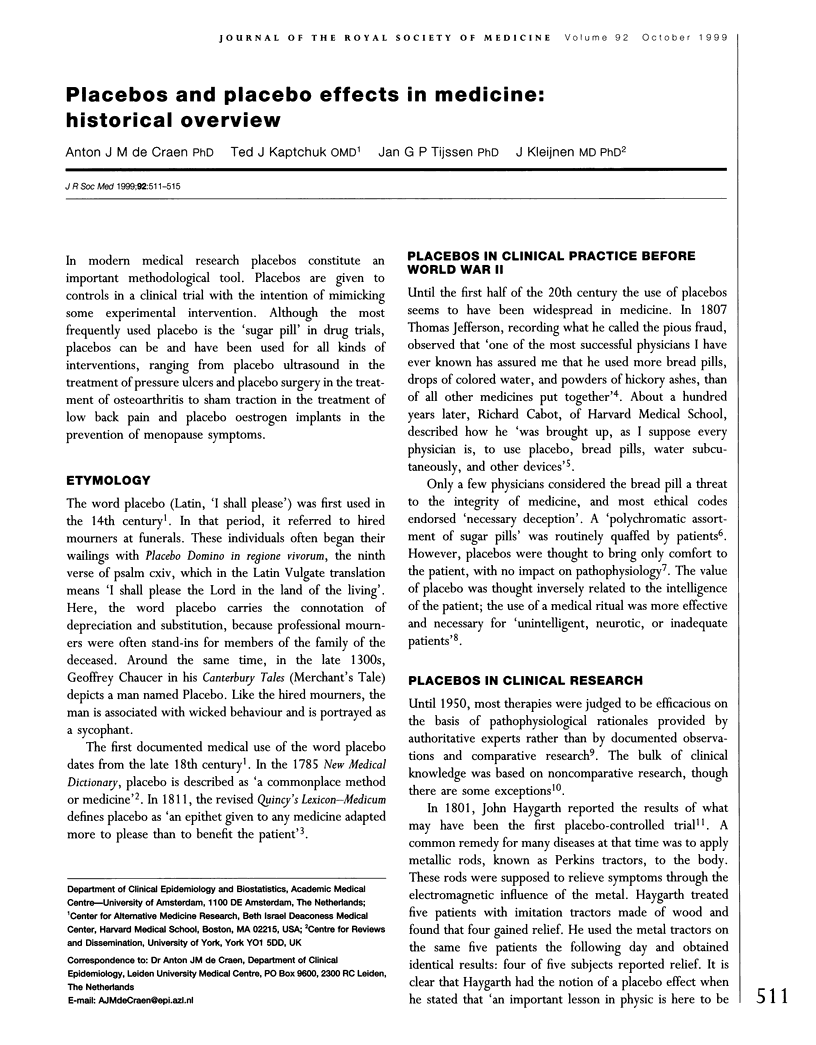
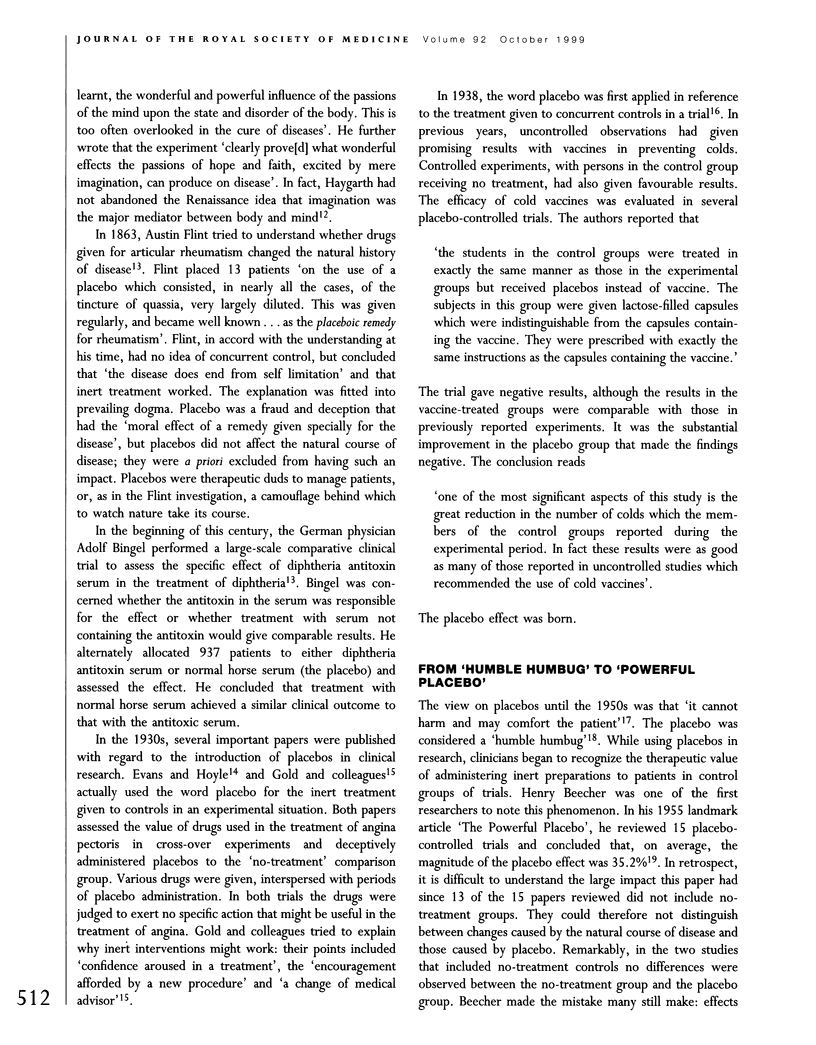
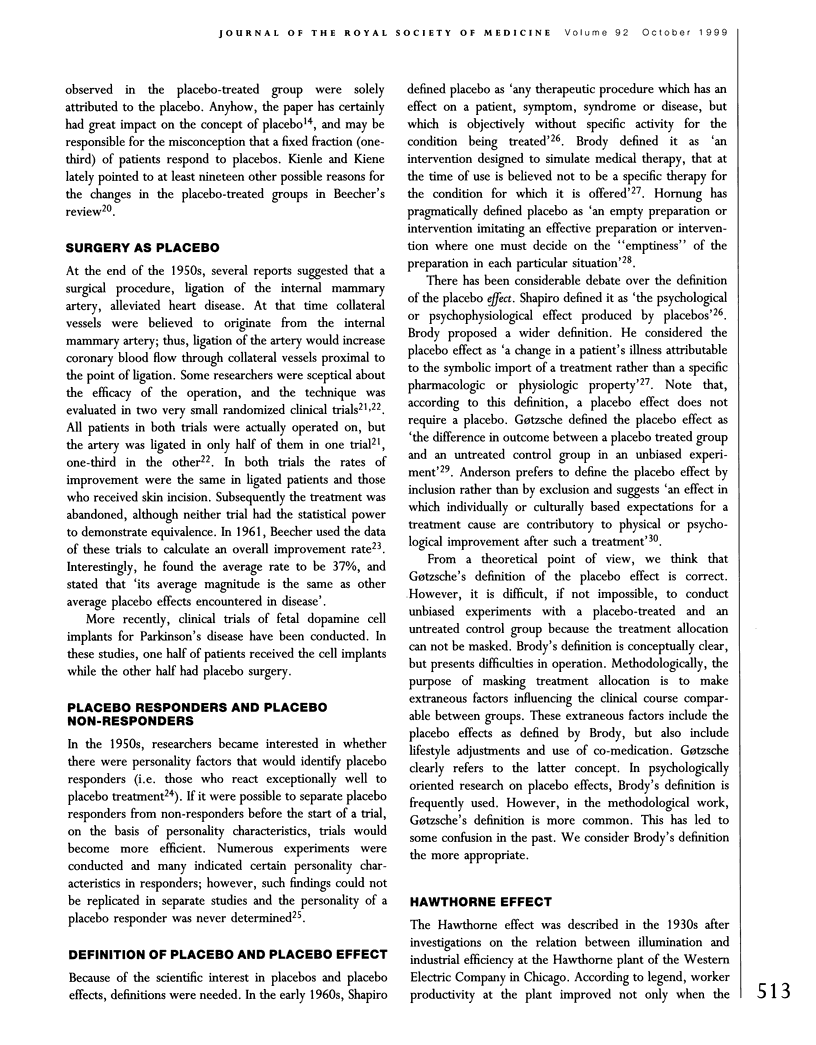
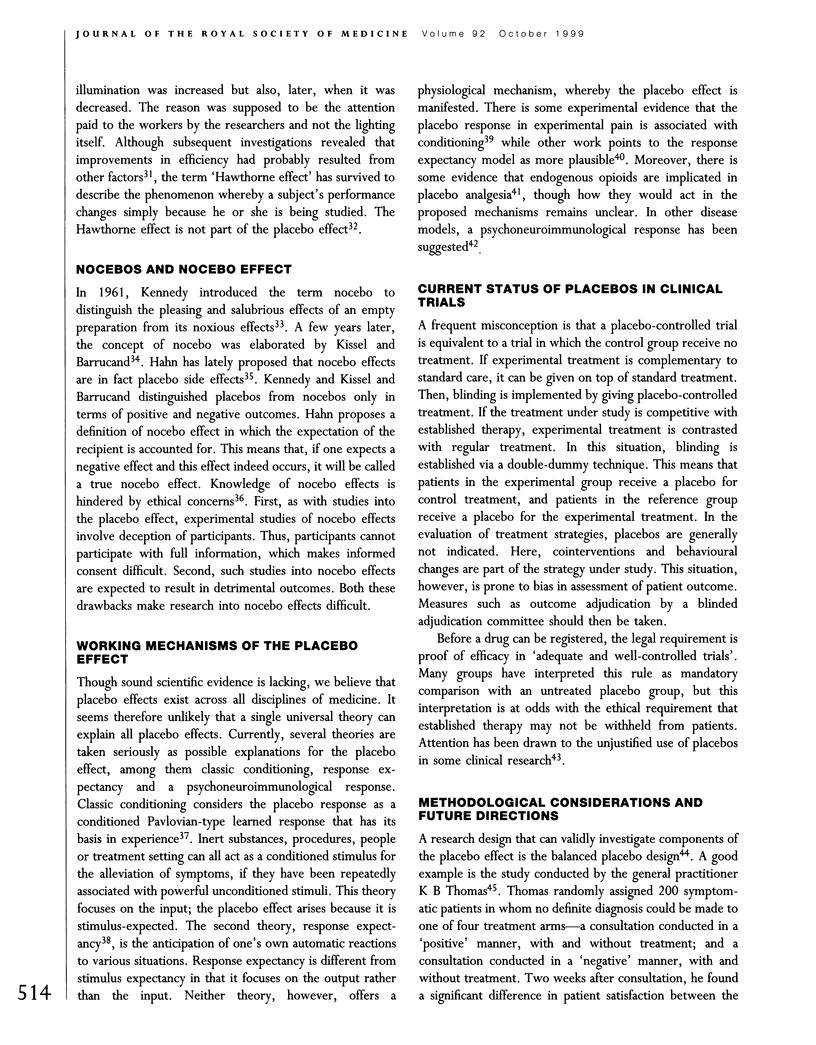
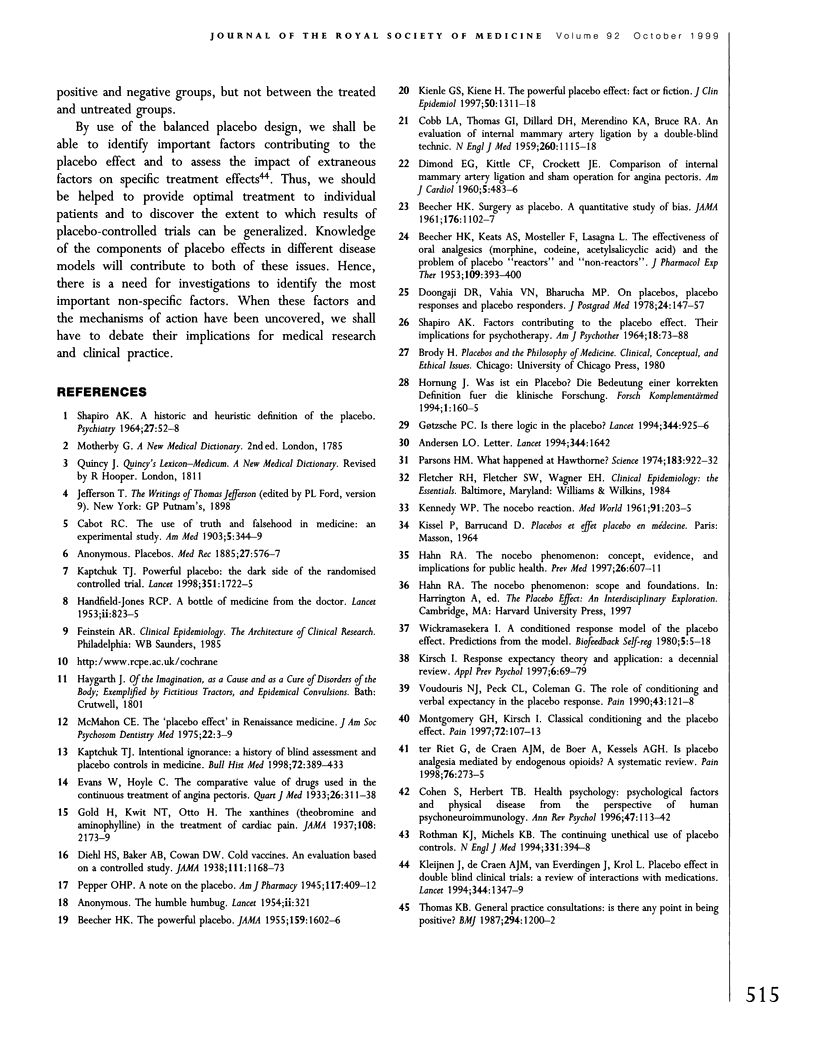
Selected References
These references are in PubMed. This may not be the complete list of references from this article.
- Andersen L. O. Placebos in medicine. Lancet. 1994 Dec 10;344(8937):1642–1642. [PubMed] [Google Scholar]
- BEECHER H. K., KEATS A. S., MOSTELLER F., LASAGNA L. The effectiveness of oral analgesics (morphine, codeine, acetylsalicylic acid) and the problem of placebo "reactors" and "non-reactors". J Pharmacol Exp Ther. 1953 Dec;109(4):393–400. [PubMed] [Google Scholar]
- BEECHER H. K. Surgery as placebo. A quantitative study of bias. JAMA. 1961 Jul 1;176:1102–1107. doi: 10.1001/jama.1961.63040260007008. [DOI] [PubMed] [Google Scholar]
- BEECHER H. K. The powerful placebo. J Am Med Assoc. 1955 Dec 24;159(17):1602–1606. doi: 10.1001/jama.1955.02960340022006. [DOI] [PubMed] [Google Scholar]
- COBB L. A., THOMAS G. I., DILLARD D. H., MERENDINO K. A., BRUCE R. A. An evaluation of internal-mammary-artery ligation by a double-blind technic. N Engl J Med. 1959 May 28;260(22):1115–1118. doi: 10.1056/NEJM195905282602204. [DOI] [PubMed] [Google Scholar]
- Cohen S., Herbert T. B. Health psychology: psychological factors and physical disease from the perspective of human psychoneuroimmunology. Annu Rev Psychol. 1996;47:113–142. doi: 10.1146/annurev.psych.47.1.113. [DOI] [PubMed] [Google Scholar]
- DIMOND E. G., KITTLE C. F., CROCKETT J. E. Comparison of internal mammary artery ligation and sham operation for angina pectoris. Am J Cardiol. 1960 Apr;5:483–486. doi: 10.1016/0002-9149(60)90105-3. [DOI] [PubMed] [Google Scholar]
- Doongaji D. R., Vahia V. N., Bharucha M. P. On placebos, placebo responses and placebo responders. A review of psychological, psychopharmacological and psychophysiological factors. II. Psychopharmacological and psychophysiological factors. J Postgrad Med. 1978 Jul;24(3):147–157. [PubMed] [Google Scholar]
- Gøtzsche P. C. Is there logic in the placebo? Lancet. 1994 Oct 1;344(8927):925–926. doi: 10.1016/s0140-6736(94)92273-x. [DOI] [PubMed] [Google Scholar]
- HANDFIELD-JONES R. P. A bottle of medicine from the doctor. Lancet. 1953 Oct 17;265(6790):823–825. doi: 10.1016/s0140-6736(53)90489-9. [DOI] [PubMed] [Google Scholar]
- Hahn R. A. The nocebo phenomenon: concept, evidence, and implications for public health. Prev Med. 1997 Sep-Oct;26(5 Pt 1):607–611. doi: 10.1006/pmed.1996.0124. [DOI] [PubMed] [Google Scholar]
- KENNEDY W. P. The nocebo reaction. Med World. 1961 Sep;95:203–205. [PubMed] [Google Scholar]
- Kaptchuk T. J. Intentional ignorance: a history of blind assessment and placebo controls in medicine. Bull Hist Med. 1998 Fall;72(3):389–433. doi: 10.1353/bhm.1998.0159. [DOI] [PubMed] [Google Scholar]
- Kaptchuk T. J. Powerful placebo: the dark side of the randomised controlled trial. Lancet. 1998 Jun 6;351(9117):1722–1725. doi: 10.1016/S0140-6736(97)10111-8. [DOI] [PubMed] [Google Scholar]
- Kienle G. S., Kiene H. The powerful placebo effect: fact or fiction? J Clin Epidemiol. 1997 Dec;50(12):1311–1318. doi: 10.1016/s0895-4356(97)00203-5. [DOI] [PubMed] [Google Scholar]
- Kleijnen J., de Craen A. J., van Everdingen J., Krol L. Placebo effect in double-blind clinical trials: a review of interactions with medications. Lancet. 1994 Nov 12;344(8933):1347–1349. doi: 10.1016/s0140-6736(94)90699-8. [DOI] [PubMed] [Google Scholar]
- McMahon C. E. The 'placebo effect' in Renaissance medicine. J Am Soc Psychosom Dent Med. 1975;22(1):3–9. [PubMed] [Google Scholar]
- Montgomery G. H., Kirsch I. Classical conditioning and the placebo effect. Pain. 1997 Aug;72(1-2):107–113. doi: 10.1016/s0304-3959(97)00016-x. [DOI] [PubMed] [Google Scholar]
- Parsons H. M. What Happened at Hawthorne?: New evidence suggests the Hawthorne effect resulted from operant reinforcement contingencies. Science. 1974 Mar 8;183(4128):922–932. doi: 10.1126/science.183.4128.922. [DOI] [PubMed] [Google Scholar]
- Rothman K. J., Michels K. B. The continuing unethical use of placebo controls. N Engl J Med. 1994 Aug 11;331(6):394–398. doi: 10.1056/NEJM199408113310611. [DOI] [PubMed] [Google Scholar]
- SHAPIRO A. K. A HISTORIC AND HEURISTIC DEFINITION OF THE PLACEBO. Psychiatry. 1964 Feb;27:52–58. doi: 10.1080/00332747.1964.11023375. [DOI] [PubMed] [Google Scholar]
- SHAPIRO A. K. FACTORS CONTRIBUTING TO THE PLACEBO EFFECT. THEIR IMPLICATIONS FOR PSYCHOTHERAPY. Am J Psychother. 1964 Mar;18:SUPPL 1–1:88. doi: 10.1176/appi.psychotherapy.1964.18.s1.73. [DOI] [PubMed] [Google Scholar]
- Thomas K. B. General practice consultations: is there any point in being positive? Br Med J (Clin Res Ed) 1987 May 9;294(6581):1200–1202. doi: 10.1136/bmj.294.6581.1200. [DOI] [PMC free article] [PubMed] [Google Scholar]
- Voudouris N. J., Peck C. L., Coleman G. The role of conditioning and verbal expectancy in the placebo response. Pain. 1990 Oct;43(1):121–128. doi: 10.1016/0304-3959(90)90057-K. [DOI] [PubMed] [Google Scholar]
- Wickramasekera I. A conditioned response model of the placebo effect predictions from the model. Biofeedback Self Regul. 1980 Mar;5(1):5–18. doi: 10.1007/BF00999060. [DOI] [PubMed] [Google Scholar]
- ter Riet G., de Craen A. J., de Boer A., Kessels A. G. Is placebo analgesia mediated by endogenous opioids? A systematic review. Pain. 1998 Jun;76(3):273–275. doi: 10.1016/S0304-3959(98)00057-8. [DOI] [PubMed] [Google Scholar]


